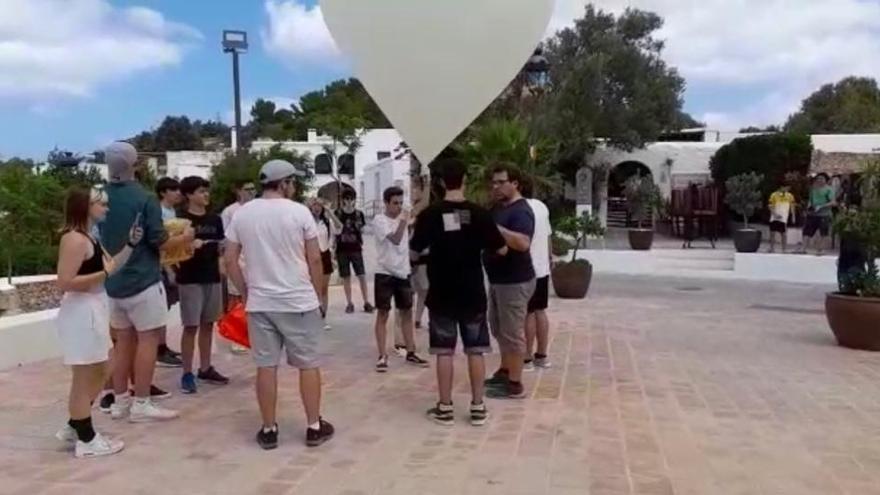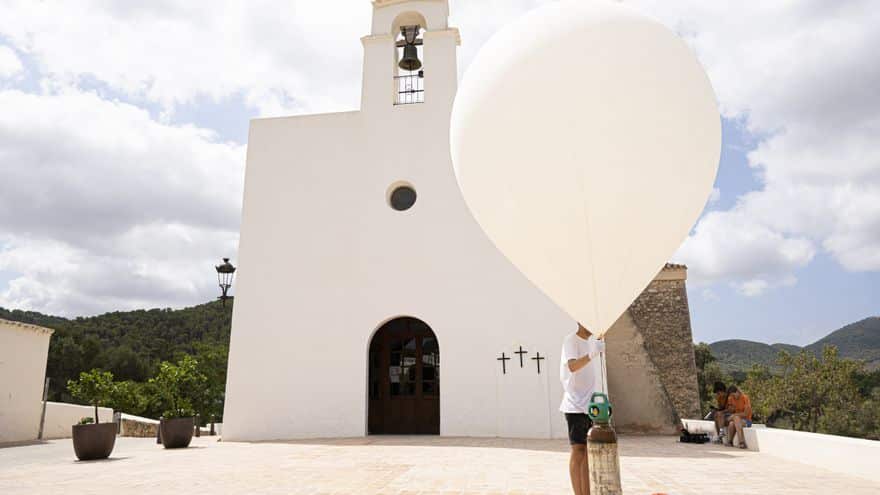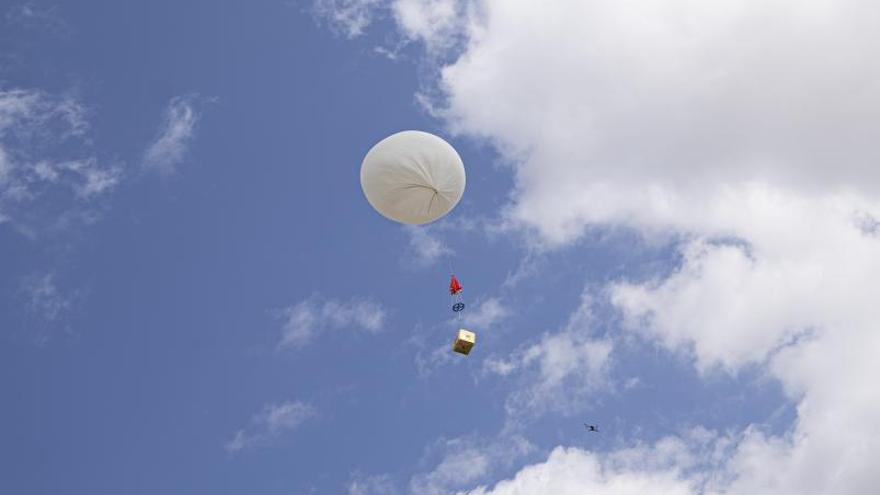Two dry ice corks, a GPS, a chip to measure the temperature and batteries to give life to the GPS and the Arduino software. With these materials, the Tecnoestiu students in the FabLab of Vila on Ibiza have created the nanosatellite throughout the month of July that was launched on Thursday at 12:38 pm from the square of the church of Sant Agustí.
Young Ibizan engineers
At the launch, three of the young ‘engineers’ from the course were present as well as the Councillor for Mobility and Modernization, Aitor Morràs and Bartomeu Alorda, the director of Innovation of the UIB and coordinator of the activity. In addition, Jesús Jurado, regional secretary of Productive Sectors, and Eduardo Zuñiga, general director of Innovation also attended.

In addition, the students responsible for the nanosatellite were accompanied by other young people who have participated in the Tecnoestiu building of the robot Otto and came to Sant Agustí to encourage them. Around 11:30am they finished assembling the nanosatellite that shortly after would be launched and for two and a half hours would fly over the island to end up landing in Sant Joan with a small parachute after having traveled at an approximate height of 33 kilometers, 103.5 kilometers to the north of Ibiza. However, the end of the Augustinian nanosatellite mission was not a happy one. The GPS signal was lost when the device was flying over Portinatx and it is believed that it fell into the water. The tracking system will continue to emit signals for a week and it is hoped to be recovered.
Despite the excitement of the moment, calm reigned among the young people. “There are no nerves. We know it will go up because we have a helium balloon. It may not reach the height we thought it would and, instead of falling into the sea, it may fall on land. Even so, it is expected to fall by Sant Joan, in the area of Portinatx“, said Luis Marí, one of the young people who has carried out this project.
For his part, his colleague Víctor Muñoz had his doubts about the flight of the nanosatellite: “There are a few nerves. I’m not sure it’s going to go very well, but if everything goes as planned, great. The predictions we made give us about three flight hours”, explained Muñoz shortly before the start in Sant Agustí.
For the full article, please visit Diario de Ibiza website here.


 Cape Canaveral at the church of Sant Agustí | PHOTOS BY IRENE VILÀ CAPAFONS
Cape Canaveral at the church of Sant Agustí | PHOTOS BY IRENE VILÀ CAPAFONS